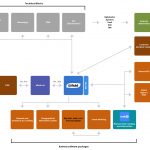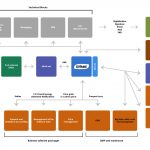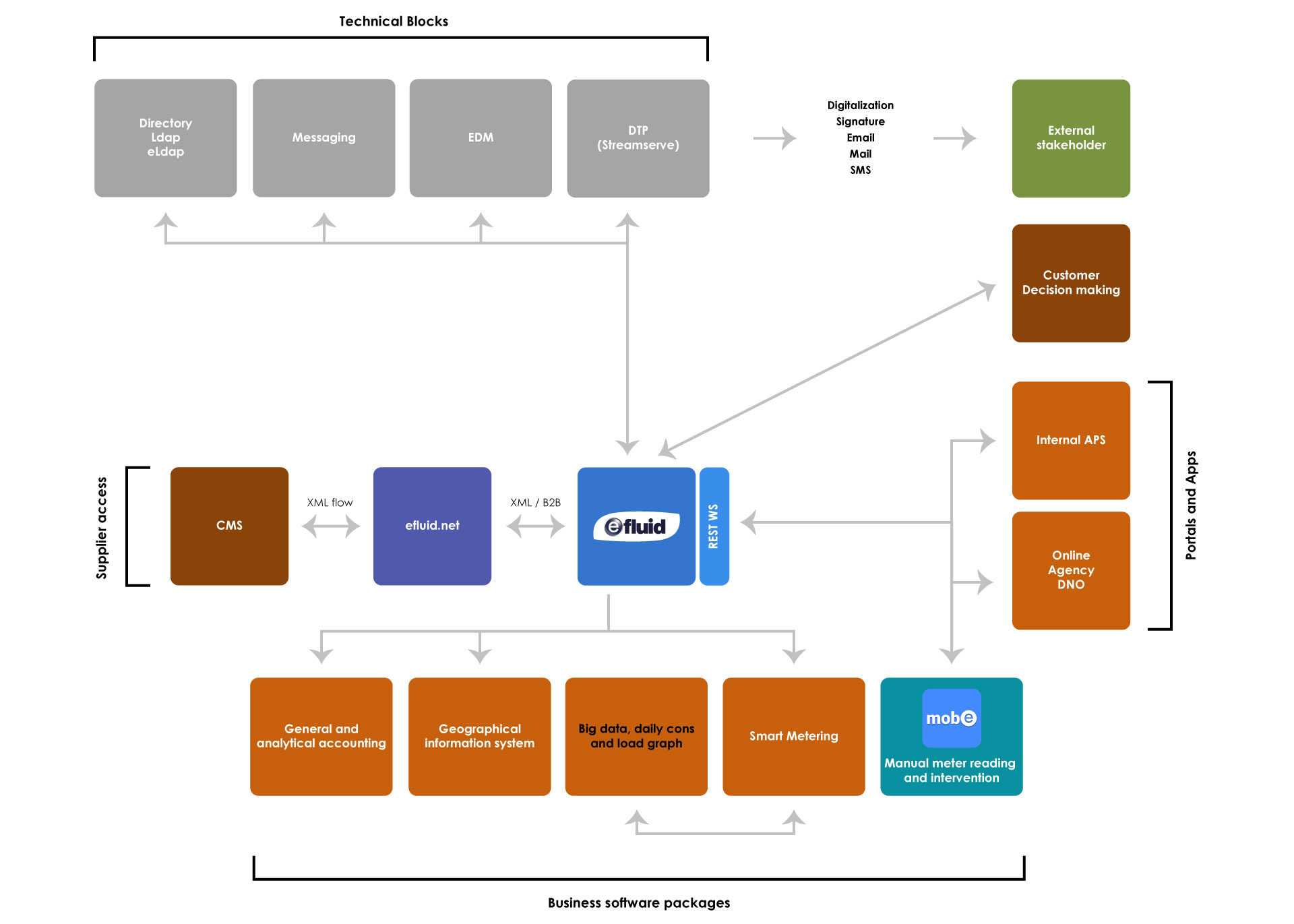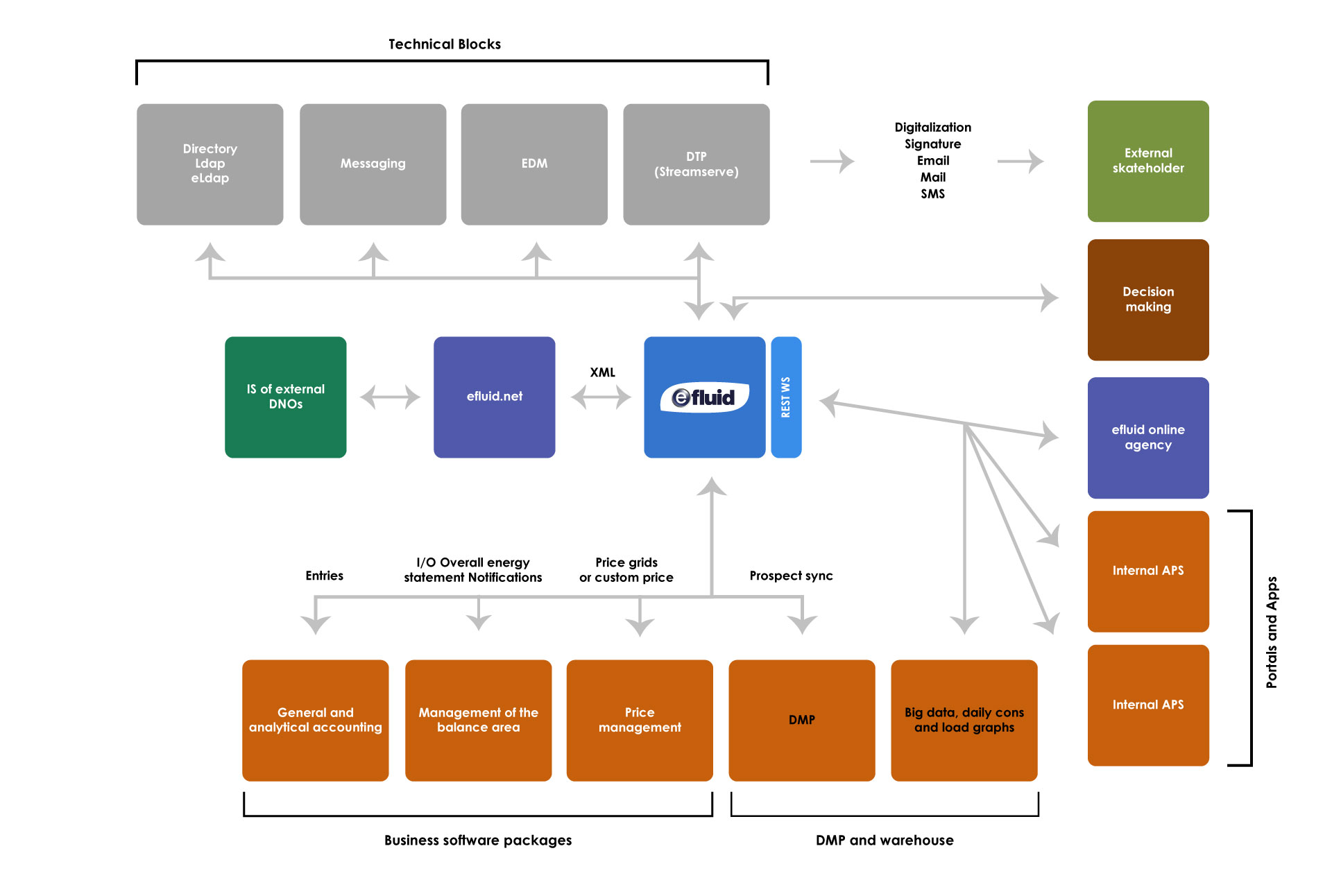Component-based approach
The component-based approach
All functions present in efluid were designed with components in mind:
The component-based approach will be used to connect together functional components in highly complex architectures which are then called upon naturally by business functions (front and back office), in accordance with what happens in reality.
This design is based on a highly innovative “dual” static modeling which involves, when a new requirement emerges, not implementing it through developments, but making it possible quite simply through configuration tools. All the work of the efluid designers involves making these components increasingly intelligent.
Thanks to this architecture, efluid evolves, leaving each customer a large amount of customization in terms of the rules and processes. efluid can therefore natively offer great flexibility to adapt to the organizations in place, rather than the other way around. It is also this unique approach which serves to manage the resilience of the system, a fundamental challenge in highly complex ISs.
Based on this component logic, the efluid suite is better suited than any other IS to the requirements of each customer: perfect modeling of the organization, integration of the management rules by simple configuration.
Business components
These will allow configurations to produce:
- offers and services for management of contracts and the offer valuation engine,
- hardware configurations for the management of meter readings and the valuation engine for consumption and other physical factors,
- the entry flows for flexibly pairing efluid with the general and analytical accounting management tools of the company,
…
Technical-functional components
These will primarily be used to:
- track changes,
- model the business processes,
- publish information.
A customized efluid for each customer
The power and solidity of the efluid architecture mean that different contexts can be handled with ease. By way of example, the same version of efluid associated with the same components (identical Java classes) can be used to deploy the solution for an electricity DNO or a gas supplier, since only the configuration of the applicative instance deployed differs.
This unique design offers each efluid customer the freedom to make their own choices and to retain their freedom to innovate, in particular in terms of offers and management of their activity.



 FR
FR


